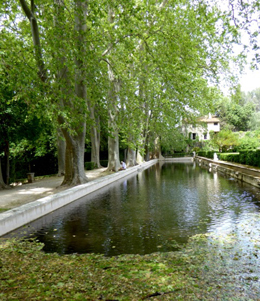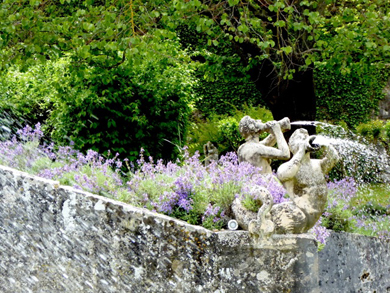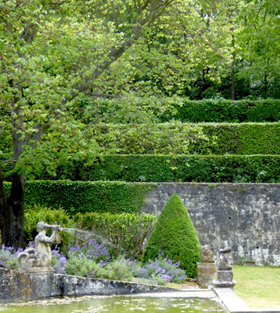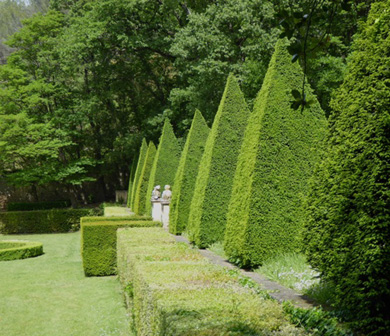A garden of surprises
Albertas, a beguiling 17th century pleasure garden, was built for a wealthy Aix-en-Provence family to take the country air with their friends. It sits to the south of the city, in Bouc-Bel-Air. The planned chateau was never built so this remains, unusually, a garden without a house.
The garden was created in three distinct terraces, incorporating Italian, French and English styles of design. Entering at the lower level the first surprise is the long canal, running pretty much the whole width of the garden, reflecting shadows of a row of magnificent plane trees.

| The canal, bordered by mature plane trees |
Beyond a wide sweep of lawn is the impressive bassin, containing exuberant sculptural fountains with 17 jets including tritons blowing water, flanked by symmetrical curving steps, santolina and sage.


Clipped evergreen hedges and statuary interface with the vibrant theatricality of the water leading up to the more natural tree planting on the boundaries.

| A view up from the bassin to the belvedere |
Above the water is a large area of mown turf with a small formal parterre – the French garden – although the original plan of 1751 indicates a more elaborate pattern of broderie de buis. The lawn is retained however, as a useful surface for plant stalls during the annual event of Les Journées des Plantes d’Albertas, which runs over three days each year at the end of May.
The highest terrace overlooking the whole garden is delineated by clipped pyramids of yew and a pair of stone sphinxes, welcoming the visitor into the more natural English garden where informal tree planting towers over a wildflower and longer grass carpet.

| Clipped pyramids at the entrance to the English garden |
The current owner gave us a generous and delightful insight into the garden’s history from its 1650 creation up to the most recent renovation, the water engineering, a little foray into the romantic liaison between Casanova and ‘Henriette’ of the d’Albertas family and how the property has now turned into a garden for all to enjoy.
Text and photographs: Anny Evason and Julia Fogg
